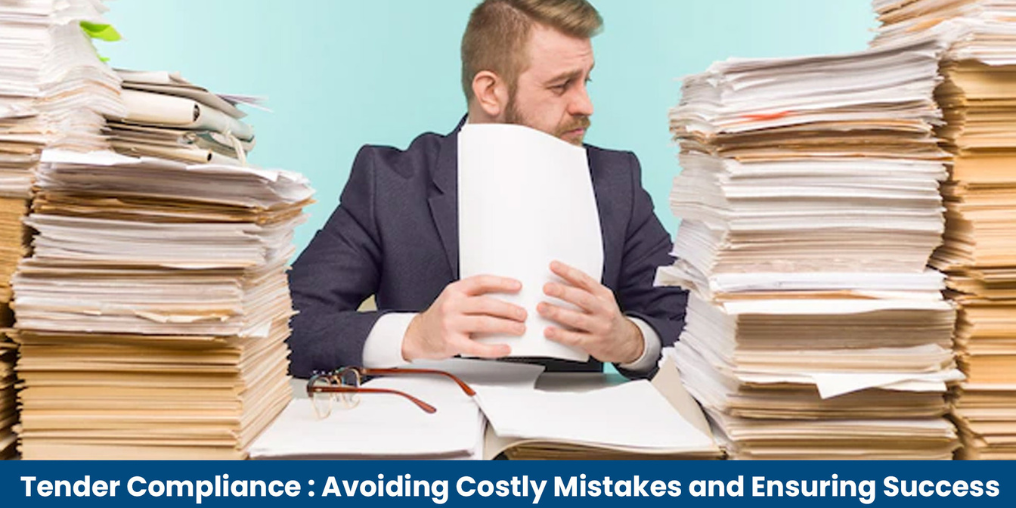Tender Compliance: Avoiding Costly Mistakes and Ensuring Success

Introduction: Why Tender Compliance Matters
Securing a government or corporate tender can transform your business—providing stable revenue, credibility, and growth opportunities. However, non-compliance is the #1 reason bids get rejected, costing companies time, money, and missed opportunities.
In this expert-backed guide, we’ll break down:
- Critical compliance mistakes that disqualify bids
- Proven strategies to ensure your tender meets all requirements
- Best practices from industry professionals
By the end, you’ll know exactly how to submit a winning, fully compliant bid.
What Is Tender Compliance? (And Why It’s Non-Negotiable)
Tender compliance means adhering strictly to the buyer’s requirements—whether in documentation, formatting, pricing, or submission rules. Even a small error can lead to automatic disqualification.
Key Compliance Factors:
- Mandatory Documents (certifications, financial records, insurance)
- Precise Formatting (font, margins, file naming conventions)
- Deadline Adherence (late submissions are often rejected instantly)
- Clear, Evidence-Based Responses (avoid vague claims; use data)
Expert Insight: "Many businesses lose tenders not because they lack capability, but because they fail to follow instructions meticulously." — John Carter, Procurement Consultant
Top 5 Costly Tender Mistakes (And How to Avoid Them)
🚨 Mistake #1: Missing or Incorrect Documentation
- Example: Forgetting a signed declaration or outdated financial statements.
- Fix: Use a compliance checklist and cross-verify before submission.
🚨 Mistake #2: Ignoring Submission Guidelines
- Example: Wrong file format (PDF vs. Word) or exceeding page limits.
- Fix: Follow the exact instructions—even if they seem minor.
🚨 Mistake #3: Late Submission
- Example: Technical errors on e-procurement portals at the last minute.
- Fix: Submit at least 24 hours early to avoid tech glitches.
🚨 Mistake #4: Unrealistic Pricing
- Example: Underbidding to win, then failing to deliver profitably.
- Fix: Conduct a detailed cost analysis before quoting.
🚨 Mistake #5: Poorly Structured Responses
- Example: Rambling answers that don’t address evaluation criteria.
- Fix: Use clear headings, bullet points, and measurable outcomes.
Best Practices for a Winning, Compliant Tender
1. Deep-Dive into the Tender Document
- Highlight key requirements and evaluation criteria.
- Identify mandatory vs. desirable elements.
2. Assign a Dedicated Tender Team
- Include legal, financial, and technical experts for accuracy.
3. Use a Compliance Matrix
- A spreadsheet tracker ensures no requirement is missed.
4. Proofread & Audit Before Submission
Check for:
- Grammar/spelling errors
- Consistent branding
- Correct pricing & calculations
5. Submit Early & Get Confirmation
- Avoid last-minute risks — submit via the correct channel and get a receipt.
How AEO (Answer Engine Optimization) Affects Tenders
Search engines and AI tools (like Google’s Gemini) now play a role in procurement. Buyers research vendors before tenders are issued.
AEO Strategies for Tender Success:
Final Checklist Before Submission
- All mandatory documents attached?
- Formatting matches guidelines?
- Pricing accurate and profitable?
- Submitted before deadline?
- Proofread by a second team member?
Conclusion: Compliance = Higher Win Rates
Tender compliance isn’t just about rules—it’s about proving reliability to buyers. By avoiding mistakes and following best practices, you increase your win rate significantly.
Need Expert Help? Our team specializes in end-to-end tender support, ensuring 100% compliance and competitive bids. Contact Us Today for a free consultation.
 By Admin
By Admin

